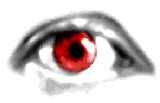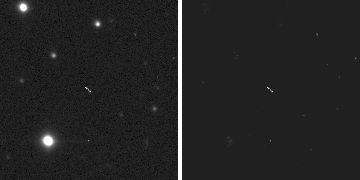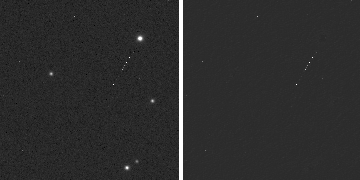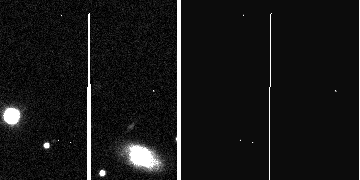
In EyE (Enhance Your Extraction) an artificial neural network connected to pixels of a moving window (retina) is trained to associate these input stimuli to the corresponding response in one or several output image(s). The resulting filter can be loaded in SExtractor to operate complex, wildly non-linear filters on astronomical images. Typical applications of EyE include adaptive filtering, feature detection and cosmetic corrections. Authors: Emmanuel Bertin & Chiara Marmo |
What’s new?
Code
Eye was probably the first convolutional neural network used in astronomy (1997). It is now unmaintained.Documentation
.ret files:
The following files have been produced by EyE trained on carefully selected image samples containing typical artifacts from different instruments. To use them for automatic identification of image defects, simply run SExtractor with a command line of the type
sex -FILTER_NAME file.ret image.fitsShown below are examples of filtering obtained with the associated files. Left: original image. Right: filtered version.
Acknowledging EyE
Bertin, E. 2001: Mining Pixels: The Extraction and Classification of Astronomical Sources, in Mining the Sky: Proceedings of the MPA/ESO/MPE Workshop, A.J. Banday, S. Zaroubi, and M. Bartelmann eds, p. 619 [PDF] [BibTeX entry].








